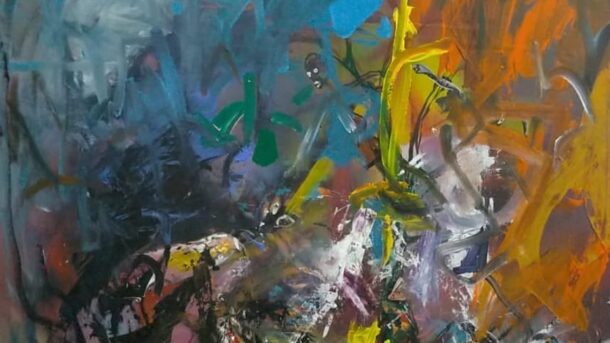The global art market has experienced an extraordinary growth spurt, driven by a combination of factors that are reshaping the industry and drawing attention from art enthusiasts, collectors, and investors around the world.
According to recent data, the art market has witnessed a remarkable increase in size, with substantial contributions from Africa.
In this article, we will explore the impressive growth of the art market, the rising prominence of African art, and the evolving trends that are making waves in the industry.
A Global Renaissance in the Art Market
In the realm of art, the numbers are indeed telling a compelling story. The global arts market, which was valued at $441.02 billion in 2022, experienced substantial expansion, reaching $579.52 billion in 2023. This represents a staggering compound annual growth rate (CAGR) of 31.4%.
Even more fascinating is the projection for the future; experts anticipate that the art market will continue to grow and is expected to reach a size of $682.08 billion by 2027, with a CAGR of 4.2%. This meteoric rise reflects the enduring allure of art and its role as an investment asset class.
Africa’s Ascendance in the Art World
Africa’s role in the global art market is gaining prominence, with remarkable strides made in recent years. According to the Africa Wealth Report 2023, the continent’s fine art market was valued at just over US$1.8 billion as of December 2022. This figure underscores the growing appreciation for African art on the international stage.
A soaring global demand for African art has contributed significantly to the art market’s remarkable year. For instance, the South African auction house Strauss & Co reported record-breaking sales of R354 million (equivalent to $20.6 million) in 2022, reflecting the increasing demand for African artworks.
Africa’s contribution to the global art market has been on an upward trajectory. In 2018, Africa contributed a substantial sum of 13 billion U.S. dollars to the global art market. According to Statista, this figure is expected to rise further to 15 billion U.S. dollars by 2023, highlighting Africa’s growing role as a significant player in the global art scene.
Trends Shaping the Local Art Market
Art auctions, fairs, and online sales are dynamic trends that are reshaping the local art market. Globally, the art auction figures saw a three percent increase in 2019, reaching an impressive USD$29.1 billion. These statistics reflect the thriving art auction ecosystem that allows art enthusiasts and collectors to acquire valuable pieces.
In Kenya, the Modern and Contemporary Art Auction East Africa 2019 held in March at the Radisson Blu Hotel in Nairobi was a remarkable success. The total auction sales exceeded Sh30 million, with an impressive 90 percent of the 59 lots being sold.
Artworks that commanded high bids included pieces by renowned artists such as Kenya’s Ancient Soi, Camille Wekesa, late Ugandan Geoffrey Mukasa, South Africa’s Charles Sekano, Tanzania’s Edward Saidi Tingatinga, and Nigeria’s Jimoh Buraimoh. This demonstrates the diverse appeal of African art across the continent.
The Path Forward: Encouraging Art Patronage
Despite the growing interest in art across Africa, art patronage remains largely in the hands of expatriates, with indigenous Africans accounting for only a modest 5-10% of art buyers. However, there is hope for a more inclusive art market.
In 2013, the Circle Art Agency (CAA) emerged as a promising force in the African art scene. It introduced a program of “pop-up” art exhibitions, showcasing artworks in corporate offices and private homes. CAA’s Modern and Contemporary East African Art Auctions, held in Nairobi in 2013 and 2014, were attended by enthusiastic crowds, with 90% of the lots sold each time, grossing US$210,000 in 2013 and US$230,000 in 2014.
While these figures may seem modest compared to international standards, they mark a promising start. CAA’s success can be attributed to the professionalism of its founders, some of whom have experience in the London modern art scene, and their dedication to encouraging business corporations to invest in arts patronage.
Conclusion
The global art market’s rapid growth is a testament to the enduring appeal of art as an investment and an expression of culture. Africa’s rising contribution to this market reflects the increasing recognition of African art on the world stage.
With growing interest in art auctions and exhibitions, as well as innovative approaches like art tokenization, the future of the art market appears promising. As the industry continues to evolve and engage a broader audience, we can anticipate that art will maintain its status as a captivating and valuable asset in our ever-changing world.




